Have you ever had the chance to watch the movie: ‘Memoirs of a Geisha’? Or at least read the book? I’ve done both at a young age and I instantly fell in love with Japan’s geisha as I witnessed their unique beauty, grace, and discipline. In fact, ever since then, I have been deeply enamored by their mystifying world — which, thankfully, has still survived up to this day!
I say ‘survived’ because I was also interested in the samurai (Japan’s olden warriors who typically serve a feudal lord or daimyo). I badly wanted to witness their noble way of life; however, it stumbled upon the upsetting fact that they no longer exist.
.
Apparently, their social class has died down around the late 1800s after the emperor favored a modern western-style army. Today, there may be descendants and people who still try to practice samurai swordsmanship, BUT it’s not the same given how the whole samurai lifestyle and system are non-existent anymore.
The geisha tradition is not as old as the samurai but it IS old and I must say… I’ve developed some sort of mild fear that they might eventually disappear too — which I hope to goodness, they won’t. This worry of mine makes a bit of sense because there aren’t that many of them anymore. To put it into numbers, back in the 1920s geishas numbered around 80,000. The current number? It is now estimated to be only 1,000 to 2,000! Because of this, I’ve actually made ‘meeting or seeing a legit geisha‘ as an item on the very top of my bucket list.
Thankfully, I’ve already made that dream come true from some of the many trips I’ve done to Japan! For instance, I talked to a geisha in Tokyo and Kyoto over a dinner banquet, I played games with 2 young senior maiko in Niigata, I caught sight of a legitimate maiko (who was on her way to work) in one of Kyoto’s narrow alleys, and I even watched two young Japanese maikos perform in Gion Corner among many others.
I definitely feel lucky for having the chance to undergo these breathtaking experiences, and now that I have met and seen them, my wish for their practices to continue for eternity has been strengthened even more! It is also my wish that more people would get to know their tradition — and the real one at that.
I say this because there is a LOT of misunderstandings about the geisha profession. In fact, ‘Memoirs of a Geisha‘ is a prime example of this! Since it was made in Hollywood, it surely had several aspects that were false (if not overly romanticized) thereby contributing to the already growing misconceptions of the culture. Thanks to my discussions with several geishas, as well as to my long research sprees, I have come to learn MORE of the truth.
Today, I will be imparting that knowledge with you so that you too can be cleared of any misconceptions that you may have about them.
~ Topmost photo from Shutterstock
RELATED READ: Meet, Play and Talk with Niigata Geisha
RELATED READ: DIY Japan Itinerary for 4, 7, 10, 14, and 21 Days
Geisha Facts
» What is a Geisha?
A geisha, which translates to English as “performing artist” or “artisan”, is a high-class professional and traditional female entertainer in Japan trained in various forms of art. In the west of Japan such as in Kyoto, they use another name which is geiko. Whereas in the Kanto area (around Tokyo), they call them geigi. For Tokyo and other places, they just commonly use the word geisha.
For the sake of consistency in this article, I will use the word geisha. Besides, it is a widely recognized term that is used to encompass both that of western Japan’s geiko/geigi and Tokyo’s geisha.
Geishas are usually hired to attend to guests (who are predominantly and traditionally male) during banquets, meals, parties, and other occasions as they demonstrate their skills through various ways such as dancing to a tune played with a shamisen (a Japanese stringed instrument), initiating games, doing the art of conversation, and more.
For these affairs, they meet up with their guests at an ochaya* (tea house) or at a ryōtei (traditional Japanese restaurant) and charge their customers by the hour with flat fees.
Ochaya are highly exclusive places that customarily only grant entry to regular or trusted customers. This is mainly because of how they operate: they don’t bill their guests at the end of the evening, but rather once a month for all the expenses accrued.
That being said, there is a special level of trust involved. For instance, not just about anyone can go up to an ochaya without being introduced to it first by an already existing customer (and that existing customer would essentially risk their reputation by trusting the behavior of the person that they are introducing to the ochaya). Going by this train of thought, hiring a geisha to have a dinner banquet with is not easy especially if you’re not Japanese and not well-connected, as it is exclusive AND expensive.
Fortunately, most ochaya have lessened their restrictions in the past years, and tourists can now have a geisha dinner if they go through partnered travel agencies and hotels. However, you will still need to prepare a considerable budget for this because a full dinner can be worth around 50,000 yen and up ($470~ or Php 22,500~) per geisha or maiko. This does NOT include dinner yet which starts at 10,000 yen ($95~ or Php 4,500~), as well as an interpreter if you don’t know how to speak Japanese (since geishas and maikos don’t train in English conversation).
Want to meet with a geisha?
TRIVIA: Some people will say that it is a ‘waste’ of money to have a geisha dinner if you don’t speak Japanese — the magic of it all may cease to exist! They say that this is because you’ll be missing out on one of their best talents: conversation or witty banter.
.No matter the case, this is all up to you of course! The way I see it, it might indeed be a waste of money, BUT I don’t think it’s a bad idea to do it anyway and get an interpreter (better yet, drag along your Japanese friend). And if you’re up for it, there are also already a few trained and recognized foreigner geisha in Japan who can speak English. I went through this experience myself and I enjoyed it so much! (To learn more about these modern foreigner geishas, go here).
“Why are geisha expensive to book?!“
First of all, not only is their training long, meticulous, and costly (which they have to slowly pay back to their okiya or geisha house), but their whole attire (handmade kimono which are designed just for them) are costly too — it can start at $10,000!
.
» What Is a Maiko?
A maiko, which translates to English as “dancing child”, is an apprentice geisha.
Historically, a maiko starts her training at a young age of around 3 or 5 years old. But now, their training starts at a much later date. In Kyoto, they start at 15 or 16, and in Tokyo, they start at 18.
Nevertheless, any girl who wants to enter the community does not have to begin as a maiko because it’s said that they can already proceed to be a geisha. Still and the same, they are required to do at least a year’s worth of training before debuting as a full-fledged geisha. For women who are aged 21 to 23 and above, they are deemed to be too old to become maikos so they already become a geisha when they get accepted to the community — again, still with training beforehand.
In Tokyo, maikos are called as hangyoku (“half jewel”) and they can remain to be so until they are 23. For the sake of consistency in this article, I will use the word maiko.
History of Geisha
» The First Geisha
Geishas started to appear in the pleasure quarters of Japan before the turn of the 18th century — but one interesting fact that you must know is that the first geishas were actually men, called taikomochi (drum or taiko-bearer, though not all of them used this Japanese drum) or hōkan (jester).
These male geishas basically started as ‘jesters’. They attended to daimyo (feudal lords) in the 13th century and provided entertainment, if not help advise their lord about military strategies. In the 16th century, they became storytellers (otogishu or hanashishu) and even battled alongside their lord at times. When peace began in the 17th century, they rather had to change their role to being pure entertainers.
The first female geisha (onna) appeared around 1751 and she was called a geiko (which now remains to be the term for geisha in Kyoto). Eventually, teenage odoriko who were expensively-trained “dancing girls” or dancers-for-hire started to appear as well.
By the end of the 18th century, female geisha outnumbered the males and the latter’s roles have once again changed — this time around, as assistants to the women during parties. As time passed further on, being a geisha was mainly regarded as a female occupation. It became so widespread that a lot of them started to work primarily as entertainers. Anyone who was selling sex (which was against their intended kind of work) were imprisoned in order to protect the oiran who were licensed high-class courtesans or prostitutes at that time.
Today, there are only about 8 taikomochi in Japan — 4 in Tokyo, 1 in Kyoto, and the rest are scattered around the country.
.UPDATE: I was told that as of 2012, there exists a working geisha who also owns an ‘okiya’ and he is male! His name is Eitaro, dubbed as Japan’s only male geisha who performs as a female dancer, and he is found in Tokyo’s Omori district.
When World War II began, geishas started to decline. They had to close their okiya (geisha houses) and the teahouses, as well as bars, had to close shop as well. As a result, they went to other places in Japan for safety or for work (such as in factories, etc.). It didn’t help either that some prostitutes started to refer to themselves as “geisha girls” to American military men.
Nonetheless, when the war ended, the returning geishas made it a point to reinstate their traditional standards as highly-skilled entertainers, and at the same time, they proposed increased rights for their profession.
.
» Is an Oiran a Geisha?
Not at all! As I’ve previously mentioned, the geishas set themselves apart from oirans who were high-ranking courtesans.
In Japanese history, courtesans have different ranks and oiran were considered higher in status than the common prostitutes known as yūjo (woman of pleasure). The oiran were even known for their exclusivity as they serviced upper clientele at exorbitant prices; after all, even if they were engaged in prostitution, they were highly skilled in various traditional arts. In fact, the highest-ranking oiran even has a say in the customers that they want to take in.
In 1800, however, the oiran slowly fell out of demand when wealthy Japanese men and merchants started to prefer geishas as their companion of choice due to their ‘chic’ and modern demeanor..
Simply put: the rise of the geisha was the fall of the oiran.
The numbers of oiran steadily declined and then vanished when Japan outlawed prostitution in 1956. Today, there are only oiran “reenactors” who continue to perform in Japan (mostly in Kyoto) — but they do not provide courtesan services, they mostly do shows and parades known as oiran dōchū.
Left & middle photo by: Japanexperterna / CC | Right photo by: Keisuke Makino / CC
Today’s Geisha
» Current number
The geisha tradition is dwindling due to its exclusivity, expensive price, and traditional form; nevertheless, it is in Kyoto where it remains to be the strongest today. Kyoto is also the pinnacle area where meeting geishas remains to be the best and most prestigious in its five hanamachi (geisha districts or “flower towns”), namely: Gion Kōbu, Ponto-chō, Kamishichiken, Gion Higashi, and Miyagawa-chō.
If we have to put it into numbers, as I’ve previously mentioned, there only about 1,000 to 2,000 geisha now, and they are found in several cities across Japan — Kyoto, Tokyo (with well-known hanamachi of Shimbashi, Asakusa, and Kagurazaka) and Kanazawa. It is said that there are about 300 in Kyoto — but the exact numbers there as well as in other areas are unknown to us outsiders.
Speaking of hanamachi, these are places that are generally referred to as the ‘flower and willow world’ (karyukai). Given that they are speckled with okiya and ochaya establishments that are owned and run by women, all the power is held by females. Men in these districts are rather mainly artisans, dressers, or wig makers. If I may add, children who are girls are also preferred so that they can later take on the business — interestingly enough, this is a trait that is in contrast to the rest of Japan.
.
» Foreigner or Non-Japanese Geisha
In order to keep up with the times, some okiya have been accepting foreign nationals as geishas. So far there are only a few of them that have been admitted and below are their Japanese names. (Data below is as of 2016.)
- Ibu — Debuted in Anjō of Aichi Prefecture in the Ichikoma okiya on October 5, 2010
- Eve is originally from Ukraine [Retired ~ source]
- Juri — Debuted in the resort town of Yugawara in Kanagawa prefecture
- Maria is originally from Peru [Unsure if still working or retired ~ source]
- Fukutarō — Debuted in Izu-Nagaoka district of Shizuoka Prefecture in 2011
- Isabella Onou is originally from Romania [Retired ~ source]
- Sayuki — Debuted in Asakusa district of Tokyo in 2007 and became the first registered foreign geisha in Japan. In 2011, she has been disassociated with the Asakusa Geisha Association and has since worked independently in Fukugawa district.
- Fiona Graham is originally from Australia [Working ~ source]
- Rinka — Debuted in Shimoda of Shizuoka Prefecture on September 2011
- Mutsuki — Debuted in Shinagawa district of Tokyo
- Yixin is originally from China [Working ~ source]
- Kimicho — Debuted in Oimachi district of Shinagawa, Tokyo on August 2015
- Sydney Stephens is originally from America [Retired in 2017 due to personal reasons ~ source]
I had the pleasure of meeting and talking to Kimicho! Read about the interview here.
You will not see foreigner or non- Japanese geishas admitted (yet) in Kyoto since they still remain to be strictly traditional. Nevertheless, it is great to see that the rest of Japan is slowly opening its geisha tradition to others who love the culture, even if they are not of Japanese descent!
Top Myths
1 MYTH: Geishas are prostitutes.
TRUTH: Geishas are NOT prostitutes.
They are and always will be highly-skilled entertainers. It helps to note as well that prostitution is illegal in Japan ever since 1956. Plus, even though there were some of them in the olden times who offered sex to their clients, it helps to note that it was NOT a part of their true traditional function or training — call them rebels if you will, and they might just be so since as I’ve discussed previously, a geisha is imprisoned in the past should they ever offer sex to others casually (also as a way to protect the oiran).
Of course, a geisha is free to pursue personal relationships with any man that she meets through work; but such would most likely never be casual nor will it ever be her goal for such an interaction. They live in a geisha district (hanamachi) which is a very closely-knit community, and given how greatly they value their reputation, they would always pick their relationships carefully. Should they ever fall in love and want to marry, then sometimes they must retire because geishas (most especially in Kyoto) are expected to be single. Nevertheless, there are now a lot of places in Japan like Tokyo that allow married, divorced, and/or women with children to become geishas.
2 MYTH: Geishas have personal relationships with a patron or danna.
TRUTH: This is NOT true today.
It may have been a tradition in the past for them to take a danna or a patron who was wealthy enough to support the expenses related to her training and other costs in order to have a personal relationship in return (which was not inherently sexual). But today, it is very unusual for a geisha to have a personal relationship with a danna, and should they ever have one (which is rare because most of them love to be autonomous now), it’s mainly because of the patron’s desire to help prolong the geisha arts and traditions — nothing more. Again, a geisha and her danna can fall in love but intimacy is never viewed as an exchange for the danna’s financial support.
3 MYTH: Young girls are sold to okiya (geisha houses) by their parents because of poverty.
TRUTH: It may have happened way in the past, but nowadays, NO.
Today, there are no young girls sold to an okiya due to poverty; after all, it is more of a personal career choice in order to become one. In fact, a lot of girls have to persuade their parents today in order to let them become a maiko/geisha. Once a girl’s parents consent to it, she will have to be interviewed first by the association as well as the female owners of the okiya (geisha house) before being accepted.
4 MYTH: Geishas are led by men and money (as portrayed in the movie: Memoirs of a Geisha).
TRUTH: This is NOT true.
It helps to always remember that the movie was mainly fictional and set to be ‘sellable’ to audiences. (Well, hello Hollywood!). Being a geisha is like being an artist or a performer — it’s a respectable profession. And much like any career you pursue in life that you are passionate about, you do it because you love it while also earning your living from it. They don’t go around chasing after men either; it just so happens that the people that they present their art and performances to are predominantly men.
5 MYTH: Maiko goes through mizuage wherein a patron would pay to take their virginity. (As also seen in ‘Memoirs of a Geisha’).
TRUTH: Nope, not at all!
This kind of mizuage was actually a ceremony done by young courtesans and prostitutes in the past — NOT by maikos. Though there are speculations that this mizuage (taking of the virginity) was done by some maikos in the past, what’s important to remember is that this is NOT done today nor was it ever traditionally accepted to be done by geishas for their maikos. The only kind of mizuage that maikos have done was a ceremony wherein older geishas would symbolically cut the topknot of the maiko’s hair to signify her coming of age (of becoming an adult).
How to Become a Geisha
Training to become a geisha in which you start as a maiko begins at 15 or 16 in Kyoto and 18 in Tokyo (in the past, it started at 3 – 5 years old). These days, girls must have at least graduated from middle school (except Kyoto who has special laws for it) before they can make the decision to train as a maiko and eventually become a geisha.
However, it is more common for young Japanese women to start training after high school or college, and a lot more would begin later. If they are above 21 to 23, they will already start as a geisha (with a year’s training) since they are too old to be a maiko. Having said that, one doesn’t have to start as a maiko since they can already start to train as a geisha — but of course, the allure of the overall comprehensive training process as you progress from a maiko to a full-fledged geisha can be quite an experience. It can also add more to one’s hype or reputation in the community.
So in order to become a geisha, once you reach the age requirement, you or your parent need to contact, for example, Ookini Zaidan or the guild for all of Kyoto’s hanamachi businesses. You must fulfill their other basic requirements, namely: you must not be taller than 160cm, you are at least 43kg in weight, are willing to train in the traditional arts for years without contact with your family, etc. Once they consider you a good candidate, they will send out your profile to okiya houses that might be interested in training you.
NOTE: An okiya will shoulder all your expenses for food, training, clothes, etc. once you are accepted by them. From that point onward, you are bonded by a contract, and when you start working, you can slowly pay off these debts.
If you are non-Japanese, Kyoto is a hard environment to crack in so you’re better off applying to other places like Tokyo. If not applying to an okiya yourself, it will be a lot better if you know someone who can introduce you to an okasan or a mother of an okiya/geisha house. Speaking of which, do NOT try to apply if you don’t know the Japanese language yet; otherwise, absolutely no okiya will take you!
.
» Maiko Training
Photos by: My Kyoto Photo / CC
There are several stages to undergo if you first train as a maiko. First of all, the stage of…
Shikomi. As you are taken in, you will first be regarded as a shikomi or someone who basically works as a helper for the okiya as you do errands, help other geishas and maikos dress up, etc. During this stage, you are also slowly being trained into the lifestyle. Example: you’ll be taught to adjust to wearing a traditional yukata as normal clothing, grow out your hair, learn the proper demeanor, go to school (kaburejo or nyokobo) to learn the arts of the shamisen instrument, dance, tea ceremony, etc.
» This can last for about 6 months before going to the next stage.
Minarai. At this point, you will start your formal training and be regarded as a minarai which literally means “learning by watching”. In this stage, you will have an older geisha for a mentor whom you will call onēsan (sister) and this will be a bond that will stay for life. You are then expected to accompany your onesan to ozashiki (dinner banquet events) so that you can sit and observe her as well as other geishas and maikos interact with the customers. Through this way, you will not only gain real insights into the job but you will also gain the chance to know potential clients. At times, your onesan will allow you to perform but she will keep a close eye on you. (FYI: Oftentimes, you’ll know if you spotted a real maiko or geisha when you see them being accompanied by a singular shikomi or minarai dressed in a simple kimono or yukata with no make-up or accessories on.)
» This training period starts a month before your official debut as a maiko.
Misedashi. This is your official debut as a maiko and this ceremony is like a grand public party wherein your name will be spread out across the hanamachi. You will also undergo a ritual called as sansankudo (also done in wedding ceremonies) where you exchange cups with your onesan, other geishas, and senior maikos — people who you are now bound to. Afterward, you are now free to hold your own parties and perform in festivals; but you will always join your onesan at her events and you will also continue learning from her.
» Normally, this stage will last about 4 to 5 years.
.
» Debuting as a Geisha
Photo by: My Kyoto Photo / CC
Erikae. Around the age of 21 to 23, you will be promoted as a full-fledged geisha in yet another public ceremony called erikae or “turning of the collar” wherein as the name implies, they will turn your red collar to white as a sign of your transition to maturity from that of a maiko girl into a geisha woman.
Geisha. You will continue studying, working, and holding ozashiki banquets until you pay off your debts to your okiya. You could also take on a minarai/maiko under your wing. When your debts to your okiya are settled, you may choose to move out, work independently, or continue living in the okiya.
Hiki-iwai. This is a celebration that marks your retirement as a geisha, and it can be because of various reasons: you want to quit the geisha life, you want to pursue another career, you are too old to work publicly, you want to get married, or you want to become an okami-san (proprietress of either an ochaya or okiya).
Realistically-speaking however, not a lot of maikos make it to the geisha level because the lifestyle can be quite difficult. Also, once someone does become a geisha, it’s also common for them to retire within 5 years of their debut.
Anyhow, geishas and maikos alike are celebrated and they have a HUGE fanbase — not only in Japan but worldwide too!
How to Identify Geisha & Maiko
As you visit Japan, take note of the below points to help you quickly differentiate a geisha from their apprentice (maiko):
» Age
As I’ve already discussed, maikos usually start their training at a young age (15 to 16 for Kyoto and 18 for Tokyo) so they are much younger than a full-fledged geisha who often start at around 21 to 23.
.
» Makeup
.On a typical day, a maiko will be seen wearing the most recognizable feature of geishas: the full white face makeup. Geisha, on the other hand, do NOT have this makeup on unless they are going to do a special performance or dinner banquet.
Maikos will always have a noticeable white band of unpainted skin on their hairline (since they don’t wear wigs) and their eyebrows will be shaded in red or pink, their cheeks blushed, and their eyes outlined with black eyeliner and red eyeshadow. During the early stages of their training, ‘junior’ maikos (or minarai) will only have their lower lip painted in red, and as they advance (as ‘senior’ maikos), both of their lips will be painted but only in a thin line.
For geisha who need to have their face painted when they work, apart from having no visible part of exposed skin near their hairline (given that they wear wigs), their eyebrows will also only have a faint shade of red, their eyes outlined in black (if a ‘senior’ geisha) or with a slight red (if they’re a ‘junior’ geisha) and their lips painted fully in red.
Left photo by: Joe Baz / CC | Circle & right photo by: Annie Guilloret / CC
NOTE: This white makeup fully covers the geisha or maiko’s face, neck, and chest — except for the nape (called komata or the back of a person’s neck) which they will make sure is visible when they would, later on, wear their kimono (as seen in some of the photos at the earlier part of this post). This part is considered to be a traditionally erotic area in Japan so they accentuate this sensuality by customarily leaving an inverted “V” shape on a geisha and an inverted “W” shape (sanbonashi) on those who just debuted as maikos. This style is called as eri-ashi or eriashi.
.TRIVIA: In the olden times, geishas practiced ohaguro or the Japanese custom of blackening one’s teeth and it lasted until the end of the Meiji period (though at times, there are still some Kyoto geiko today who sometimes have pitch-black teeth). In those times, pitch-black objects were regarded as beautiful so they had their teeth blackened especially when they are coming of age as a sign of maturity and beauty (girls, boys, and even nobles did it too).
.
» Hair
Geishas usually wear wigs, whereas maikos have their hair styled naturally. A geisha’s wig and a maiko’s natural hair are regularly styled by highly-skilled artisans. Lately, however, traditional hairstyling is slowly phasing out because it can sometimes lead to balding on the top of their head. Nevertheless, it remains to be practiced.
Maikos have their hair styled in the wareshinobu style consisting of two “wings” and a big bun at the center; but when a maiko turns senior, she will put on an ofuku hairstyle and this usually starts after 2 to 3 years of being a maiko (the only difference with the wareshinobu style is how the ofuku style has a rectangular piece of cloth pinned at the bottom of the bun with no red fabric sticking out).
The wig worn by geisha is called katsura that is styled in the taka shimada hairstyle. At times, this wig can change and styled into a kyoufuu shimada style. In times when they are not wearing a wig, geishas put up a yohatsu hairstyle which literally means ‘western style’ since it is modeled to western updo’s or perms.
Left photo by: My Kyoto Photo / CC | Right photo by: Hiromu Aoki / CC
TRIVIA: All maikos have their hair styled elaborately every week. To keep their hairstyle intact, maikos sleep with their necks on small supports or special pillows called as takamakura. I can’t find an image online that I’m allowed to use but if you’ve watched the movie Memoirs of a Geisha, you’ll know what I’m talking about.
HAIR ORNAMENTS. Maikos wear more elaborate decorative hair ornaments called as kanzashi and the designs can vary depending on the stage of training that they are currently in. A first-year maiko will wear shidare-kanzashi that flows down the entire side of their face from her hair to her chin, symbolizing their youth. A junior maiko will have a kanakodome or special hair ornament as well as a red piece of silk (signifying that she’s still a child) on the center of her bun along with a lot of hair ornaments, notably a daikin (main front kanzashi), a big seasonal kanzashi (worn on the left part of her hair) and a katsuyama bridge (a big crown-like kanzashi placed in front of the bun). For senior maikos, the most notable change is that they will stop wearing the katsuyama bridge and start wearing colorful kushi (comb that is less decorative than a katsuyama bridge, thus signifying maturity).
In contrast, geishas wear simpler kanzashi or smaller hair ornaments like a kushi (comb-shaped kanzashi), maezashi (small hairpins), tama kanzashi (single-colored bead hairpin), and hanemottoi (silver paper wires atop the hair).
Photos by: My Kyoto Photo / CC
.
» Outfit & Footwear
KIMONO. A maiko usually wears a colorfully-designed hikizuri kimono (Japanese traditional garment) that has furisode or long-sleeves garment that almost touch the ground (commonly worn by unmarried women), along with a wider, longer, and heavier obi (sash) that is set to look like a bow as it drapes down to their back showing the end which has the kamon or the logo of the maiko’s okiya or geisha house — this obi is actually called as a darara obi. A maiko’s collar is also a distinct feature because it is thick and embroidered, hangs very loosely, and is mainly in the color red (other colors can only be gold or white). It will slowly have white embroidered patterns as they advance in their training but it will always remain to be dominantly red.
TRIVIA: Wanna know the most expensive item in a geisha or maiko’s outfit? It’s the pocchiri or obidome which is an accessory on the obi (belt) made of expensive real jewels such as jade, agate, quartz, pearl and more that can easily match the price of a luxury car. Customarily however, a pocchiri accessory is only usually worn by a maiko.
Geishas, who are more mature, wear more subdued but refined kimonos with shorter sleeves (kosode) that are usually in one color with a simple pattern at the bottom. Their kimono is also said to be in the tomesode style or the most formal kimono a married woman can wear which is essentially signifying their maturity. Also, their obi is shorter and it looks like a square bow knot at the back called a ‘taiko musubi obi’. Lastly, their collars are completely white and are not as loose. (Nevertheless, both maikos and geishas wear kimonos according to the season).
NOTE: Wanna try and wear a kimono? There are kimono rental shops in Tokyo! Read here to learn more.
TRIVIA: Wondering about the ‘bag’ that they usually bring along with them? That’s called a kago or a bag with a bamboo base and it contains business cards, dancing fans and other accessories — but never electronics, as they are not allowed to bring them while working. Moreover, even a maiko and geisha has differences in the bag: maikos have bright and colorful kago, while geishas have minimal or solid-colored kago.
FOOTWEAR. Maikos generally wear high wooden sandals to prevent their kimono from touching the ground, and they are called as okobo. Geishas use shorter wooden sandals called zori or senryo geta. Maikos will wear this too if the situation calls for it; but they wear okobo more.
Left photo by: Japonismo / CC | Right photo by: Tugumi Yoshikawa. / CC
IMPORTANT NOTE: The maiko in the photo above is wearing a black kimono because she has just officially debuted as a maiko. But overall, a maiko’s kimono is much more colorful and bold with bigger patterns (a geisha’s patterns on her kimono only start at the bottom hem and never goes over the waistline). Plus, a maiko’s obi usually has her okiya’s crest printed at the bottom (as also seen in the photo above).
.
You can even differentiate a junior from a senior maiko from the patterns on their shoulders — a junior maiko has them on both shoulders, whereas a senior maiko only has it in one shoulder.
.
» How to spot fake a maiko and geisha
You might have heard of makeover (henshin) studios in Japan that will dress tourists up as a geisha or maiko for a day. With this in mind, if you have ever seen one while you are around popular spots in Japan — like in parts of Kyoto or Tokyo — it is highly likely that you have witnessed or took a picture with a fake one.
To help you identify and spot these tourists who are only dressing up, see below the several features that they will possess. Ultimately, henshin studios make it a point to NOT dress up their clients authentically; otherwise, they will be shut down by the authorities.
- They have mismatched hairstyles, makeup, and clothing. Taking into consideration the descriptions that I’ve made previously of authentic geishas and maikos’ features, a tourist in disguise will always have a wrong mix of characteristics. For example, most of them will have the decorative long hair ornament (of a junior maiko) yet with both her lips painted (like a senior maiko or geisha) and with a wig on (though some shops can now do your hair too). They will also have shorter sleeves on the kimono despite being dressed up as maiko.
. - They are walking around crowded areas. A true maiko or geisha knows that she is sought out by tourists and they can get ‘mobbed’ in a sense; so, you will NEVER find them walking through a populated area while in their full regalia. What they usually do is walk through back streets and alleyways in order to avoid the crowd. Hence, if you ever see a maiko or geisha walking casually through a well-known place, she is surely a tourist dressed up as one.
. - They are out during the early time of the day. Geishas and maikos commonly work in the evenings; though it’s possible that they are booked for an early banquet, it almost happens rarely.
. - They are willingly taking photos with others. Geishas and maikos are actually paid for the time that requires them to get from point A to point B; so when they are out on the streets, they will never stop by to take photos with tourists. (You can always ask them though if you can take a photo, but do it quick). Therefore, if you see one who is taking her sweet time pleasing a crowd of tourists to take a photo of her (unless it’s an official event) then she is a tourist who had a makeover.
. - They are accompanied by other people who are in normal clothing. Saw a geisha or maiko with an elder or a companion who has to aid her while she walks in her high wooden shoes? That’s a tourist. Real geishas and maikos are trained to walk well with their zori or okobo sandals. Besides, they always know their way around town too. If they are ever accompanied, it will usually be by a young girl in a kimono who will carry her belongings (as mentioned previously, this will be a new maiko in training who is called a ‘shikomi’ or ‘minarai’).
.
Actually, you wouldn’t be aware of it but you might have had a legitimate geisha or maiko in your midst especially when you’re walking around in Kyoto. When they’re in their normal clothes (such as a yukata), identifying them will naturally be tough — unless you are a fan who recognizes their face or unless they are wearing their signature kimono and traditional white makeup (shiro-nuri).
NOTE: There’s another kind apart from henshin tourists whom you could easily mistake as legitimate geishas and maikos, and they’re called furisode-san or kimono-san.
.An established business by ‘Furisode Gakuin’ at Tokyo’s Asakusa district in the 1990s, these furisode-san are paid entertainers only who mimic the look and services of geishas and maikos at a cheaper price (usually around 25,000 yen or $250 for a 2-hour party). They only have about 3 months of training and again — they are NOT real geishas nor maikos.
.In fact, most of the geisha experiences that you might have read in other travel blogs are actually experiences with a furisode-san. How do the Japanese feel about these people? A mix of approval and disapproval. Approval since they help gather interest in real geishas; disapproval since they deem it as disrespectful to the real tradition.
.How then can you ensure that you’re not booking an experience with a furisode-san? Apart from the cheap price as an indicator, make sure that you book through legitimate travel agencies who only seek to provide real geisha/maiko experiences (note: I will update this section soon with relevant links for booking legit geishas).
Where to Find and Meet Geisha?
The geisha world needs to survive. It used to only be exclusively available for the rich or well-connected Japanese, but now it’s possible for other people as well as tourists to meet and see them through travel agencies and hotels.
But certainly, like I mentioned above, a private face-to-face dinner banquet or party can still prove to be pricey. If such is the case for you — don’t fret because there are still other ways to see REAL geishas and maikos at a much affordable price as listed below…
- Go book a spot in Niigata Hanamachi Chaya’s program in Niigata City. This is the cheapest way to meet, play, and talk to a real geishas up close since you only have to pay 3,000 yen ($26~ of Php 1,300~). It’s very similar to an ozashiki (dinner banquet) experience. To find out more about it, read this: Meet, Play & Talk with Niigata’s Furumachi Geigi (Geisha) for Only $26!
- Go to Miyako Odori in Kyoto. This is a yearly spring dance during April done by Kyoto’s geishas and maikos. Ticket prices start at 2,500 yen ($24~ or Php 1,100~) and you can see more info about this here.
- Go to Kamishichiken in Kyoto during February and July to September. Geishas and maikos of this district serve tea and wagashi (traditional Japanese sweets) to about 3,000 guests in an annual open-air tea ceremony held on February 25 (the plum-blossom festival in the Shinto shrine of Kitano Tenman-gū). Additionally, ever since 2010, there is a beer garden that opens up to the public at the Kamishichiken Kaburenjo Theatre from July to August (6PM to 10PM) where you can get the chance to be served by maikos and geishas. At night, geishas would also sometimes to traditional dances.
- Go to the narrow alleyways of Gion, Kyoto to catch sight of a maiko or geisha. The first time I caught a glimpse of a real maiko was when I was walking through Gion (on my way to Gion Corner). It was all unplanned since I was just following the fastest walking route shown to me by Google Maps! I was mindlessly going through narrow streets when ‘lo and behold, I saw a maiko emerging from a nearby alleyway who proceeded to stand on the corner, seemingly waiting for her taxi. From what I remember, it was around the Tominagacho area; my friends told me that it was possible that the maiko I saw visited a nearby shrine/temple before going to work (which they usually do).
.
“When is the best time to spot a maiko or geiko in Kyoto?”
Their work often starts at around 6PM to 8PM so it’s possible to see them while they’re on their way to the teahouse (walking or getting on a taxi). But ordinarily, you can have a better chance of finding geishas or maikos at around 10PM to 11PM on the streets of Gion when they make their way back to their okiya. (Again, take note of my tips above on how to spot the real ones!).
Unfortunately, there is NO guarantee that you will see them as they can be elusive and they can be anywhere! Though if you have the time, it’s advisable to linger in one place to increase your chances of sighting them. It’s said that the most common hubs would be the street of Pontocho Alley end of Shijo-dori and Hanamikoji-dori (around 5-6PM) given that a lot of the okiya are found there. Plus, as I mentioned above, it doesn’t hurt to pass by the surrounding shrines or temples since they might have made a stop there to pray before going to work.
TIP: If you want to do a guided tour around Kyoto and learn more about geishas, you can join this geisha district tour.
.
NOTE: Don’t expect to see geishas and maikos in their full regalia around Gion during “Obon Festival”, the annual Buddhist event for commemorating the souls of one’s ancestors, because they don’t work at that time. This happens during the middle of August.
.ETIQUETTE: Should you ever see a geisha or maiko as you go through the alleyways of Gion, be respectful. Taking a quick photo is fine as long as you don’t get in their way; but of course, it’s also more tactful if you ask for their permission first. Also, NEVER ever touch them and their kimono nor pull them back to make them stop and pose for you; that’s just plain rude BUT also because you have to remember that their kimonos are INCREDIBLY expensive. A famous geisha once said this: “We are not Mickey mouse and this is not Disney World, we are not here to entertain the public, we are here to entertain our patrons.”
- Go and watch the show at Gion Corner in Kyoto. This is a theater that presents regular one-hour shows of 7 performing arts in Kyoto — one of which is the well-known kyo-mai dance performance by maiko dancers. There are 2 shows every day at 6PM and 7PM [see schedule here] with prices for adults at 3,150 yen ($30~ or Php 1,400). I went to this show and I loved it! (A lot of people on TripAdvisor left such bad reviews for this show, but that’s mainly because they didn’t read their pamphlet beforehand; most of them did not understand that there are 6 Japanese performances that are apart from the well-anticipated maiko dance.)
- Go to Azuma Odori in Tokyo. A dance performance by the geishas of Shinbanshi, Tokyo is held annually at the Shinbanshi Enbujo Theater in May. (For more info, go here).
Other FAQ About Geisha & Maiko
They are NOT prostitutes. Geishas are and always will be highly-skilled entertainers — nothing more, nothing less. It helps to note as well that prostitution is illegal in Japan ever since 1956. In fact, this idea that geishas are prostitutes might have come about not only from Hollywood movies that misrepresented them but also from people who have mistaken geisha for “oiran” (the true high-ranking courtesans back in olden Japan; since 1956, they no longer exist).
In hanamachi communities like those in Kyoto, some of the basic requirements is that you must be a Japanese girl who graduated from middle school, you must be 15 or 16 years old, you must have black hair, you must not be taller than 160cm, you are at least 43kg in weight, are willing to train in the traditional arts for years without contact with your family, etc.
Usually, you or your parent would need to contact the guild of all the hanamachi businesses to apply — once they consider you a good candidate, they will send out your photo and profile to okiya (geisha houses) that might be interested in training you. Other okiya might even require an introduction, while some others will accept applications from just about anyone through email or telephone.
If you are non-Japanese, Kyoto is a hard environment to enter into because they are still fiercely traditional. You’re better off trying your chances in other places like Tokyo who are more lenient towards accepting foreigners. To do this, you can apply to an okiya yourself through phone or email, but it will be a lot better if you know someone who can introduce you to an okasan or a mother of an okiya/geisha house. Speaking of which, do NOT try to apply if you don’t know how to speak the Japanese language yet; otherwise, absolutely no okiya will take you!
The most common answer is that they have been highly inspired by the elusive and alluring world of the hanamachi and its community of elegant geisha. Most of the girls, however, do not debut as a geisha because of the difficult lifestyle; whereas others simply just want to experience working as a maiko with no plans to achieve a geisha debut.
As long as a person is working as a geisha, they must remain single — hence, a geisha must not get married. The only thing they are allowed to be “married into” is their art or profession. If a geisha actually wants to get married, they would have to quit or retire as a geisha and this is celebrated through a ceremony called hiki-iwai. Once they quit, it’s not possible to come back as a geisha but it is possible to become an okami-san (proprietress of either an ochaya or okiya). This is often the norm in places like Kyoto, but there are now a lot of places in Japan like Tokyo that allow married, divorced, and/or women with children to become geisha. Likewise, maiko are not allowed to have boyfriends.
For geisha, as they are already trained for the profession, they have more freedom to take days off as well as create their own schedule. However, for maiko who are geisha-in-training, the rules are quite strict because they are expected to focus on the traditional arts. Usually, they are only allowed 1 or 2 days off per month!! This means that they would not see their family during their whole training period. Maiko can take longer holidays for the 3 major holidays in Japan though, such as New Year, Golden Week (a collection of 4 national holidays in 7 days held around May), and Obon (Buddhist event in August).
From the moment that a maiko is accepted to an okiya, they are bonded by a contract wherein the okiya will shoulder ALL their expenses for lodging and training; in exchange, once a maiko actually starts performing, she will gradually pay off that debt to the okiya through her work. So no, maiko do not receive a salary because they are not full-fledged geisha yet (but on their days off, maiko are given a small allowance).
Geisha, on the other hand, receive compensation and it will depend on the amount of work they receive that is, of course, altogether dependent on their skills and popularity. Their exact salary is not widely shared but to give you an idea, it can start from $3,000 to $10,000 — and more! If they are highly popular, geisha will even often receive luxurious gifts and items from fans, patrons, and clients.
It is said that in the past, given that there was no electricity, wearing white makeup as a foundation (shiro-nuri) was practiced because a geisha’s face will then be better seen in the candlelight. This cosmetic practice remained today and has become a signature look of both geisha and maiko. After all, it helps create a striking contrast to their overall look in a kimono.
Apart from the kimono, the most expensive accessory is usually the pocchiri or obidome which is an accessory on the obi (belt) that is made of expensive real jewels such as jade, agate, quartz, pearl, and others. These are often costly, starting at a price of $5,000 and beyond (some of which can easily match the price of a luxury car). Customarily however, a pocchiri accessory is only usually worn by a maiko.
• • •
Overall
I hope this article helped make you gain more insight into the mysterious yet captivating world of geishas and their apprentice maikos. It took me a while to finish this but I really enjoyed writing it… and I hope you enjoyed it as well!
If in case though that this is the first time you’ve heard of Japan’s geishas, it is therefore also my hope that you’ve now discovered a great appreciation and support for their wondrous traditions.
.
P.S.: If you are more knowledgeable about geishas than me and that I’ve accidentally made a false statement above, do let me know in the comments below. After all, I understand that this tradition maintains an air of mysteriousness and anonymity since it adds to their overall ‘allure’; therefore, there might be some conflicting facts online and in some materials and interviews. Regardless, I’m quite confident with the accuracy of the things above especially after doing long hours of research and then conversing with authentic geishas to verify my facts. Let me know!

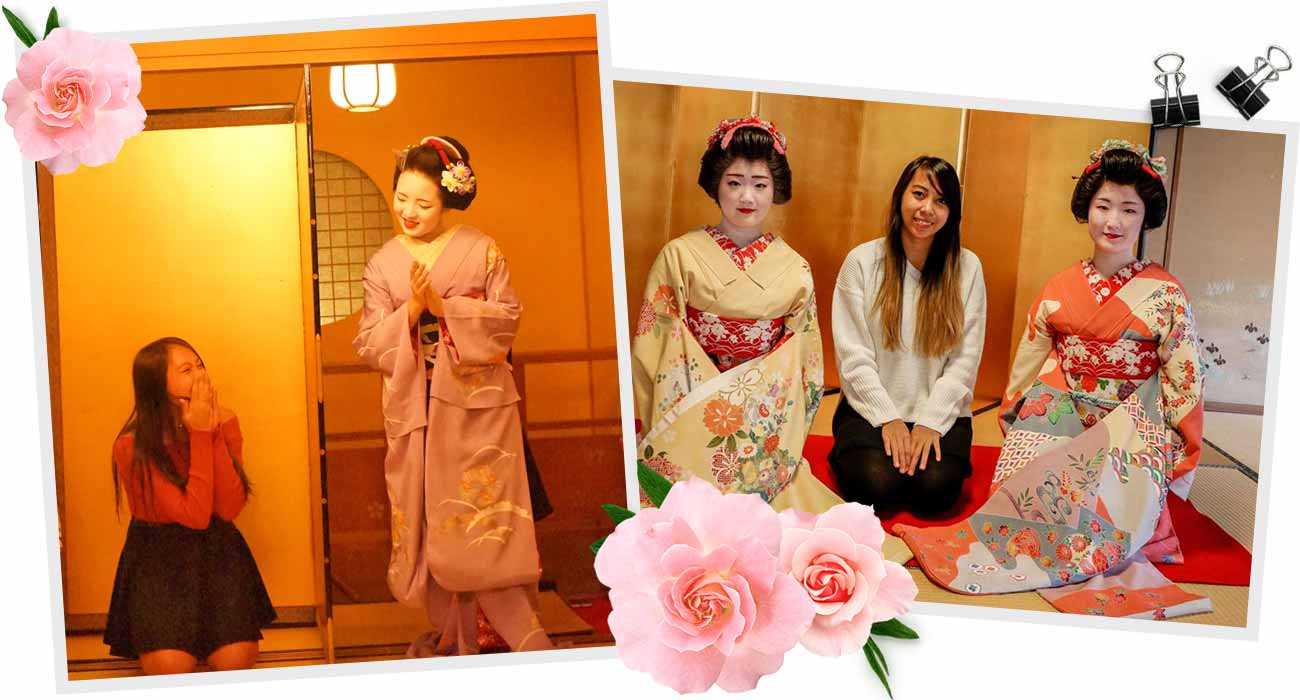
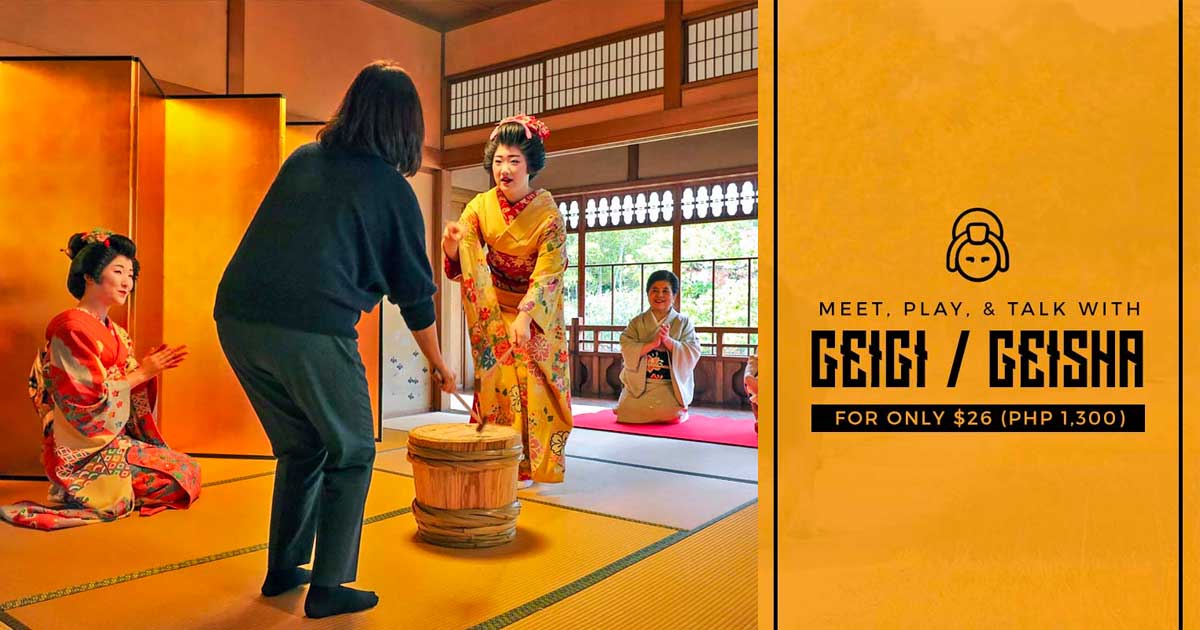

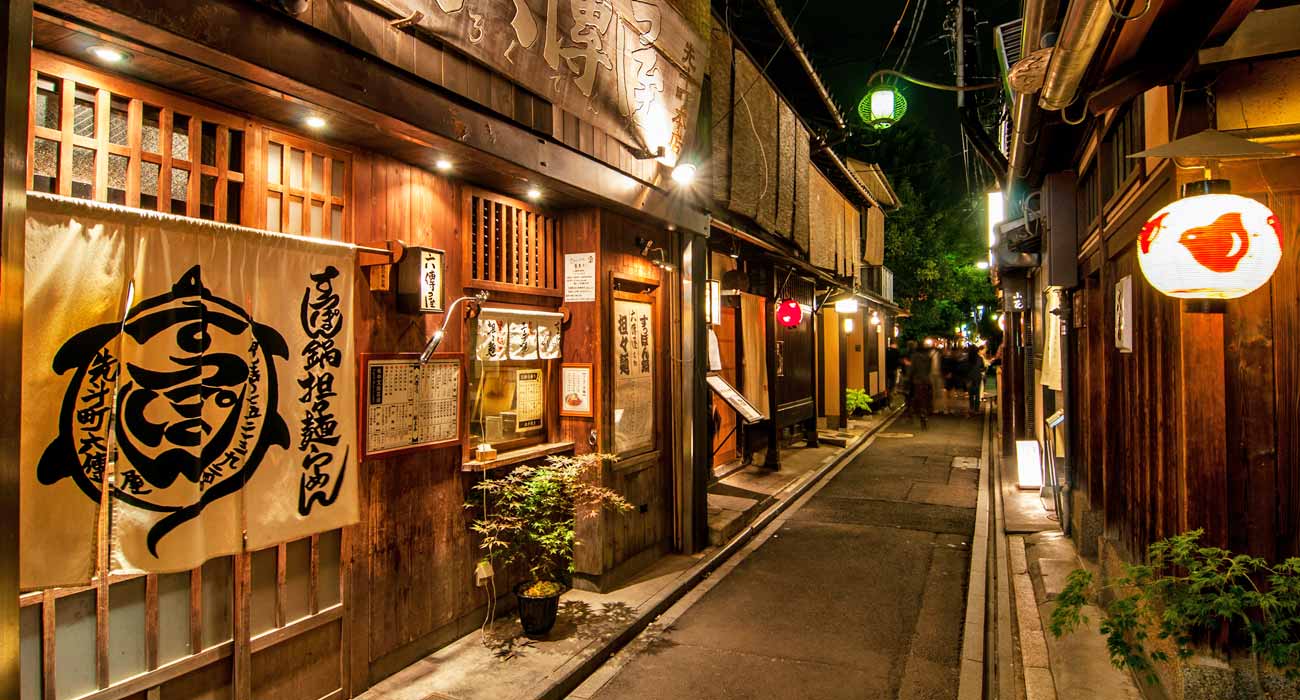
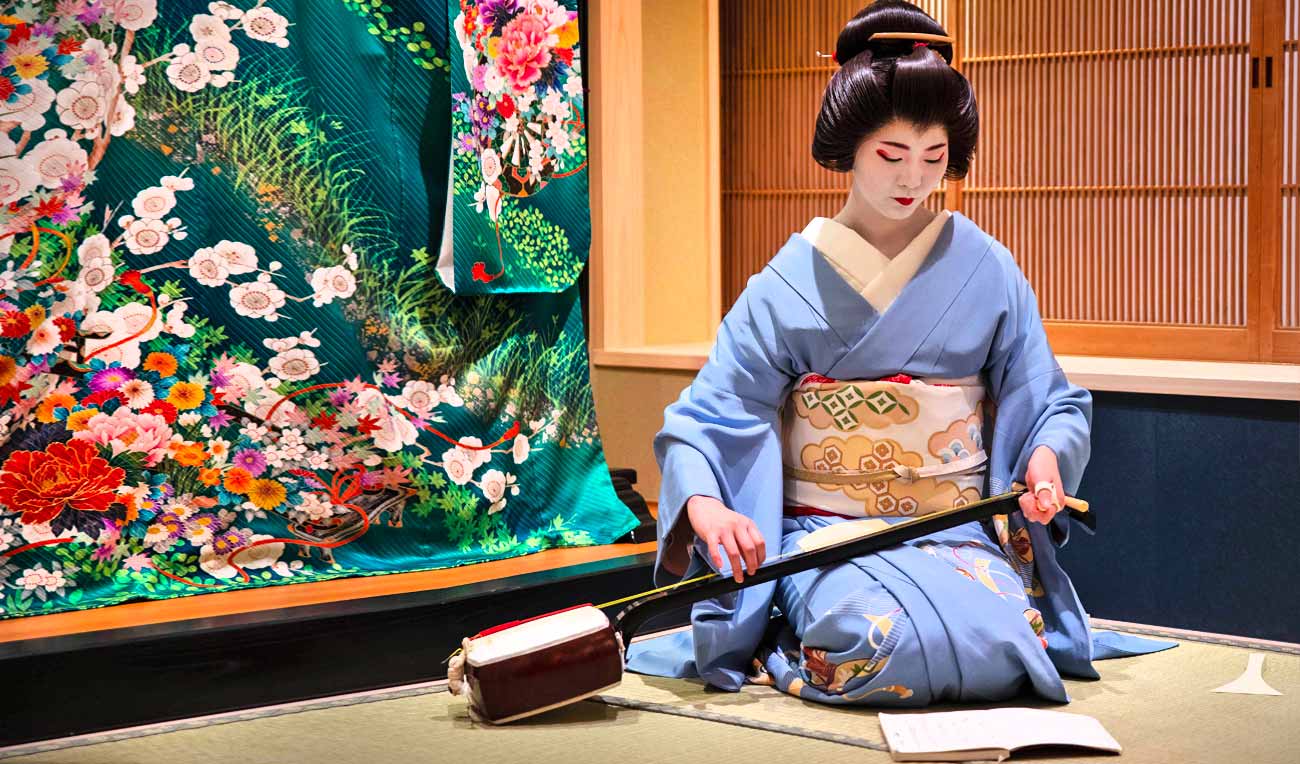
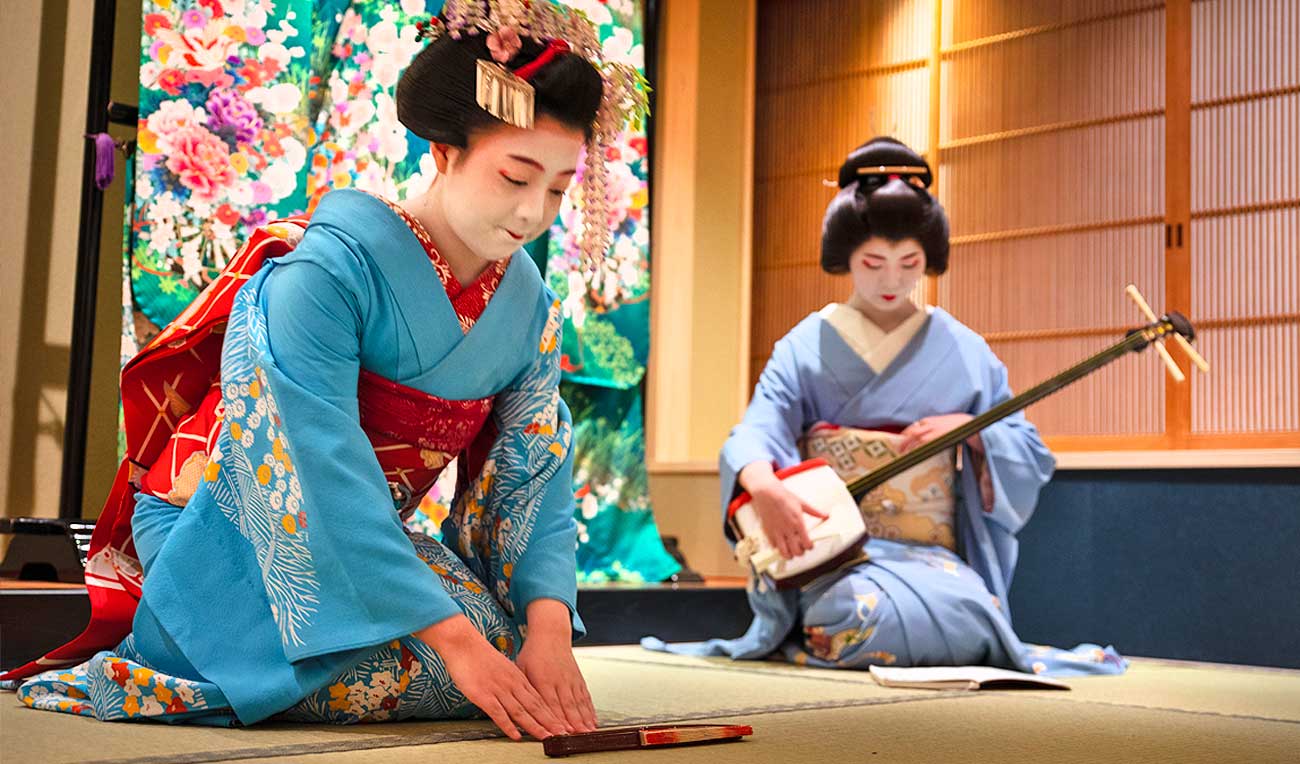
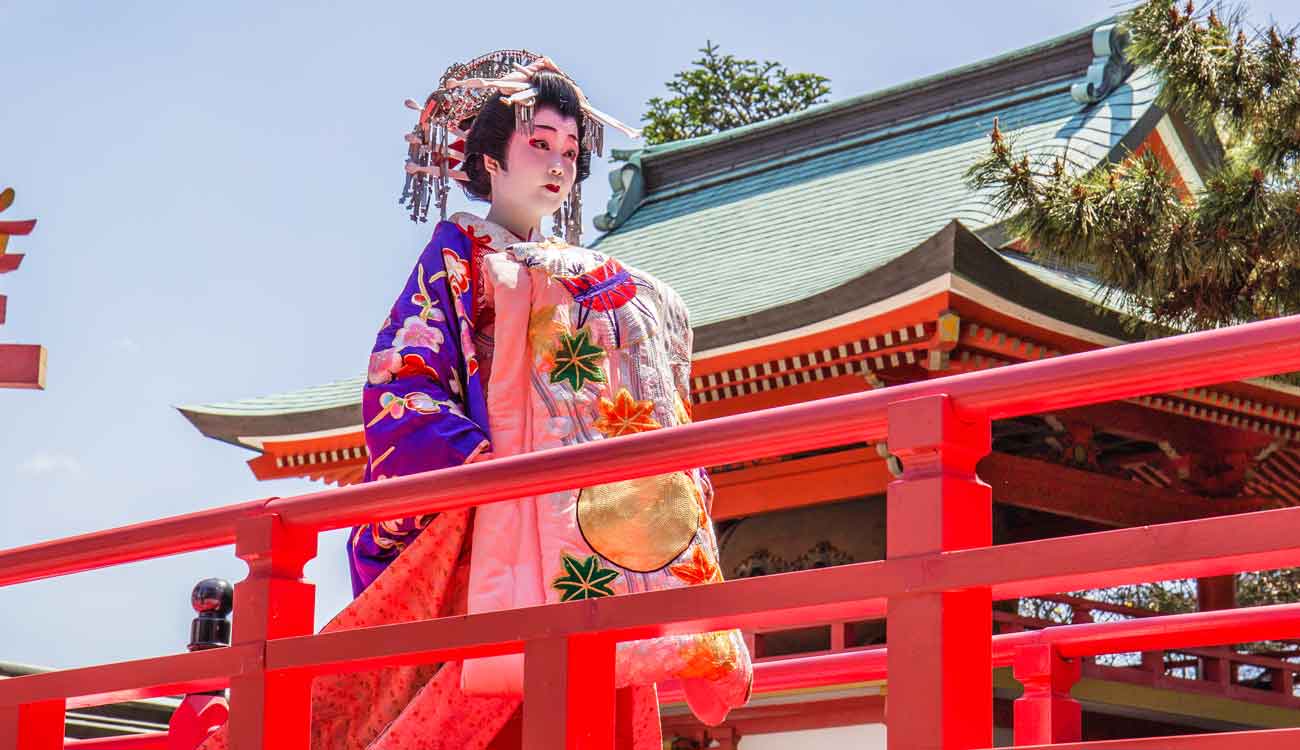
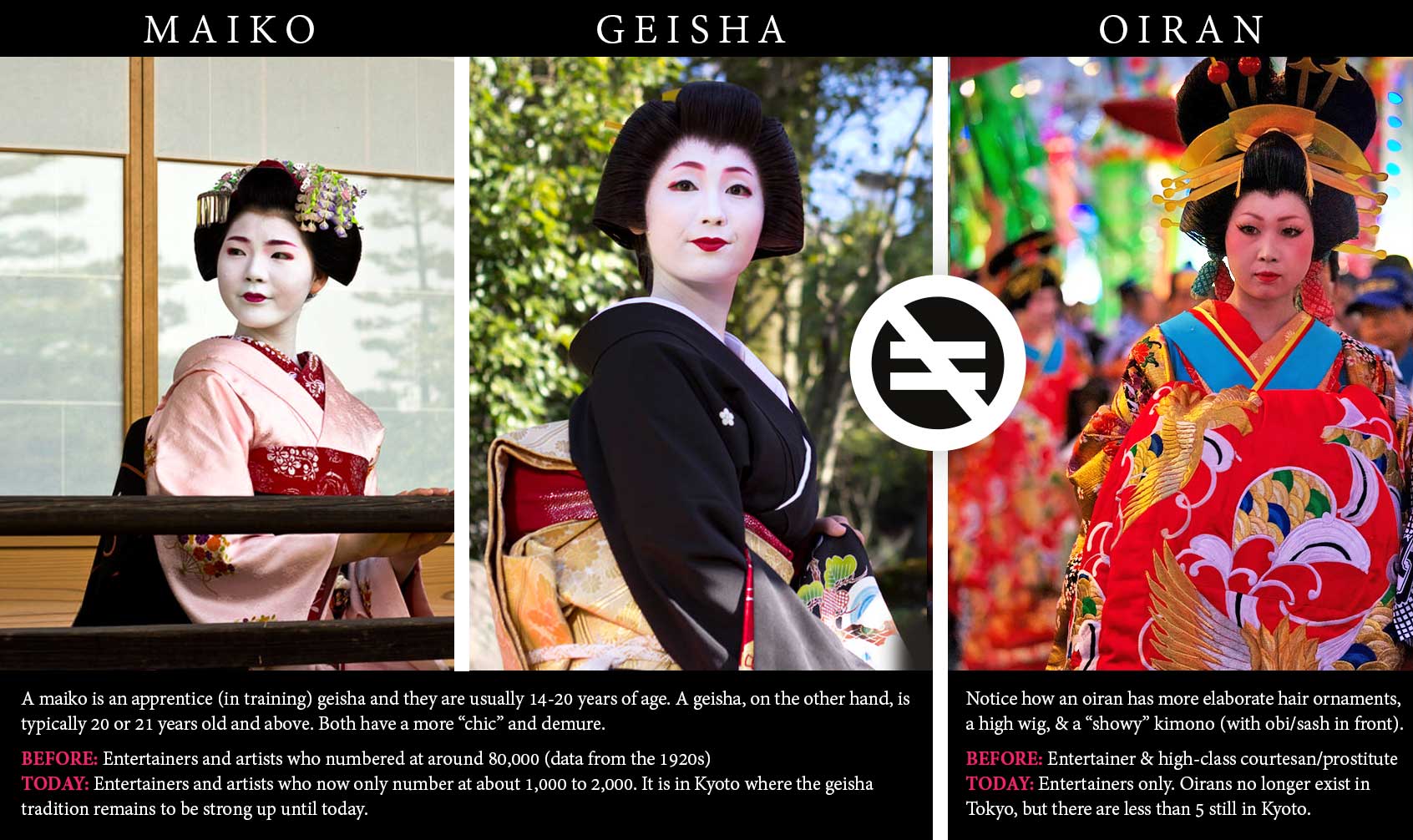

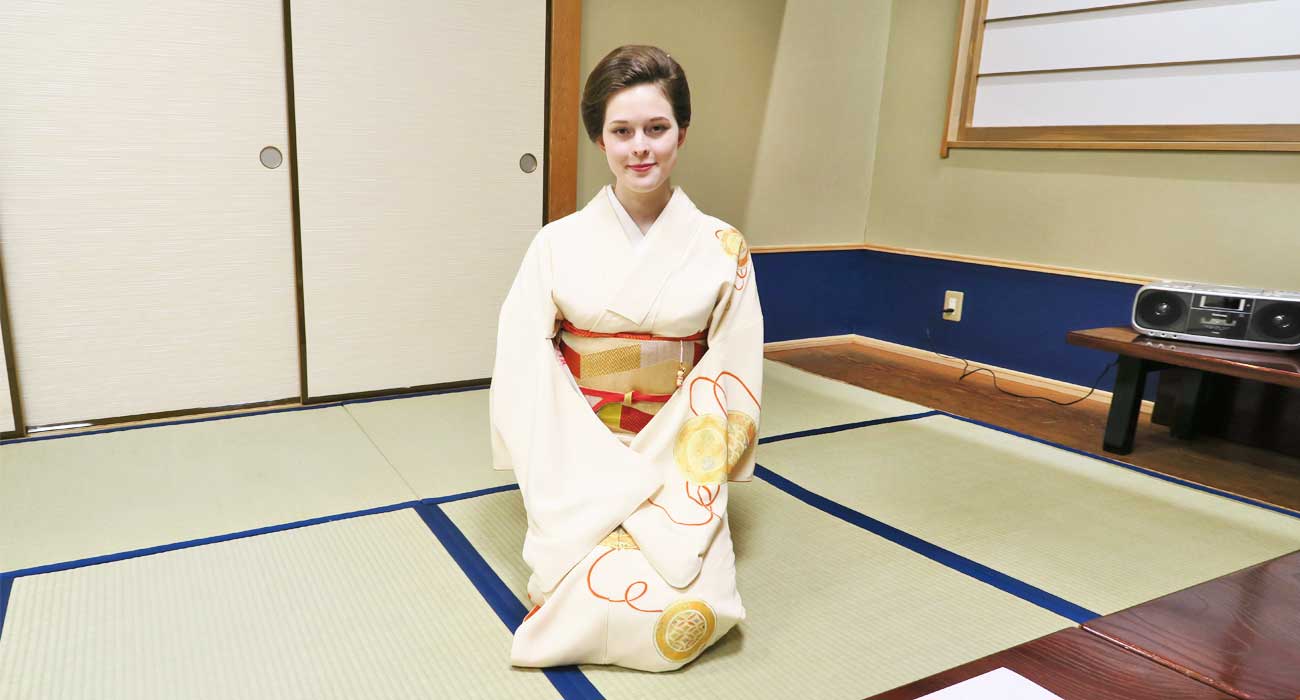
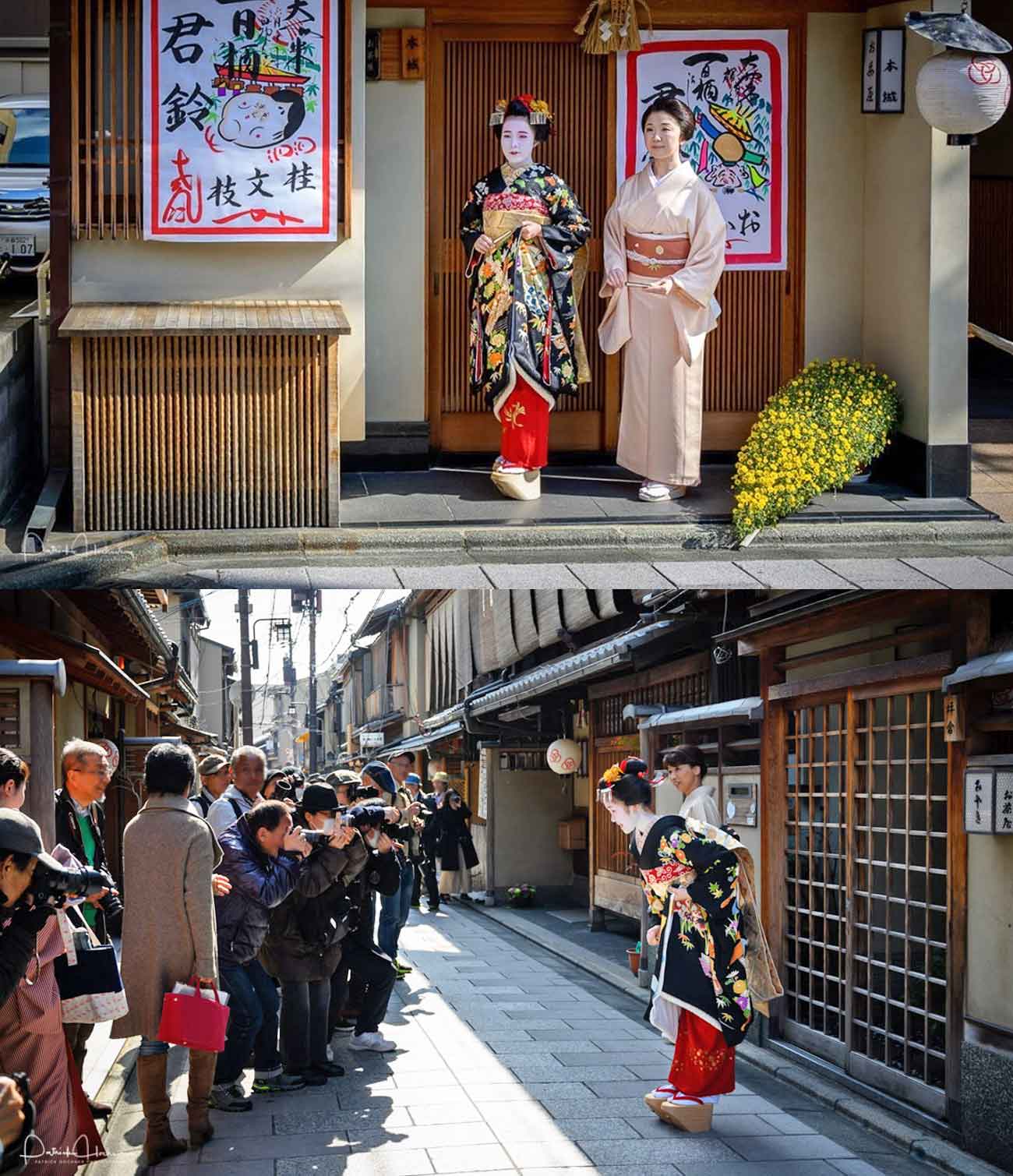
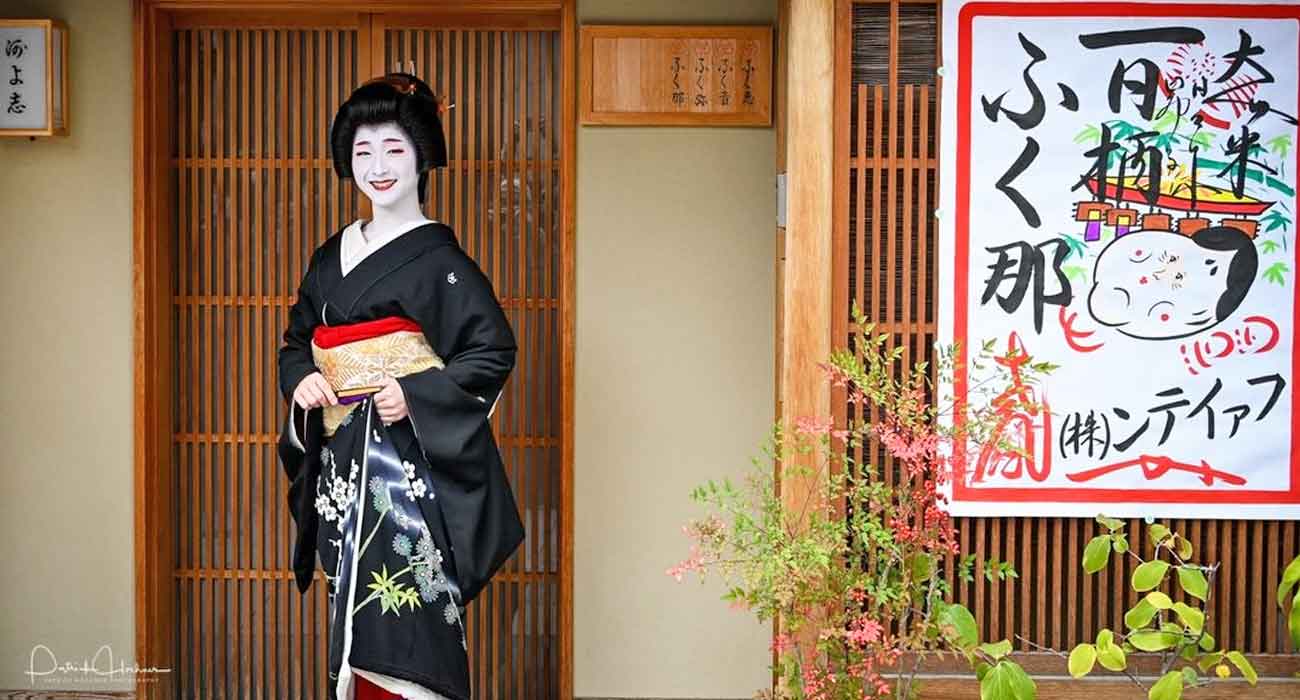
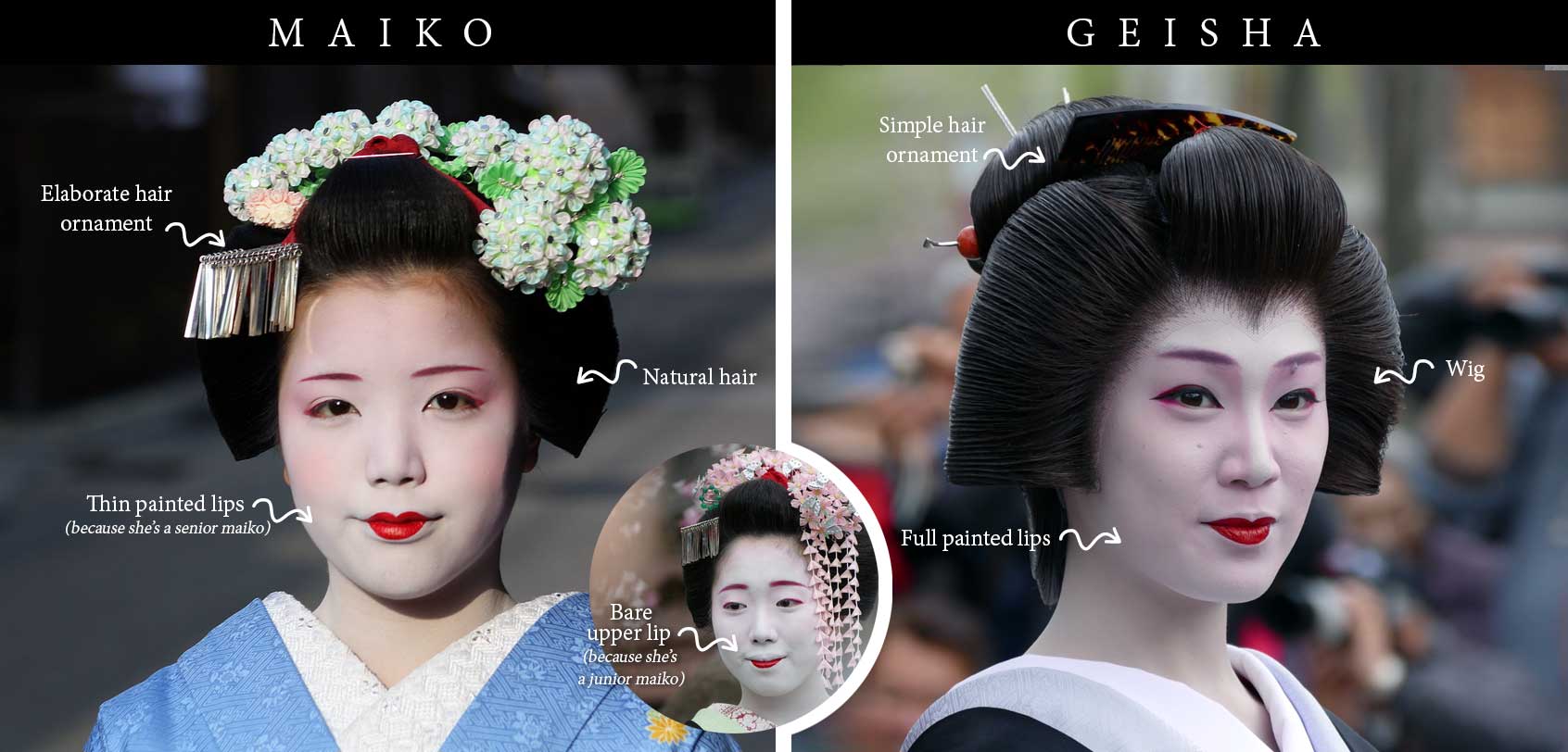
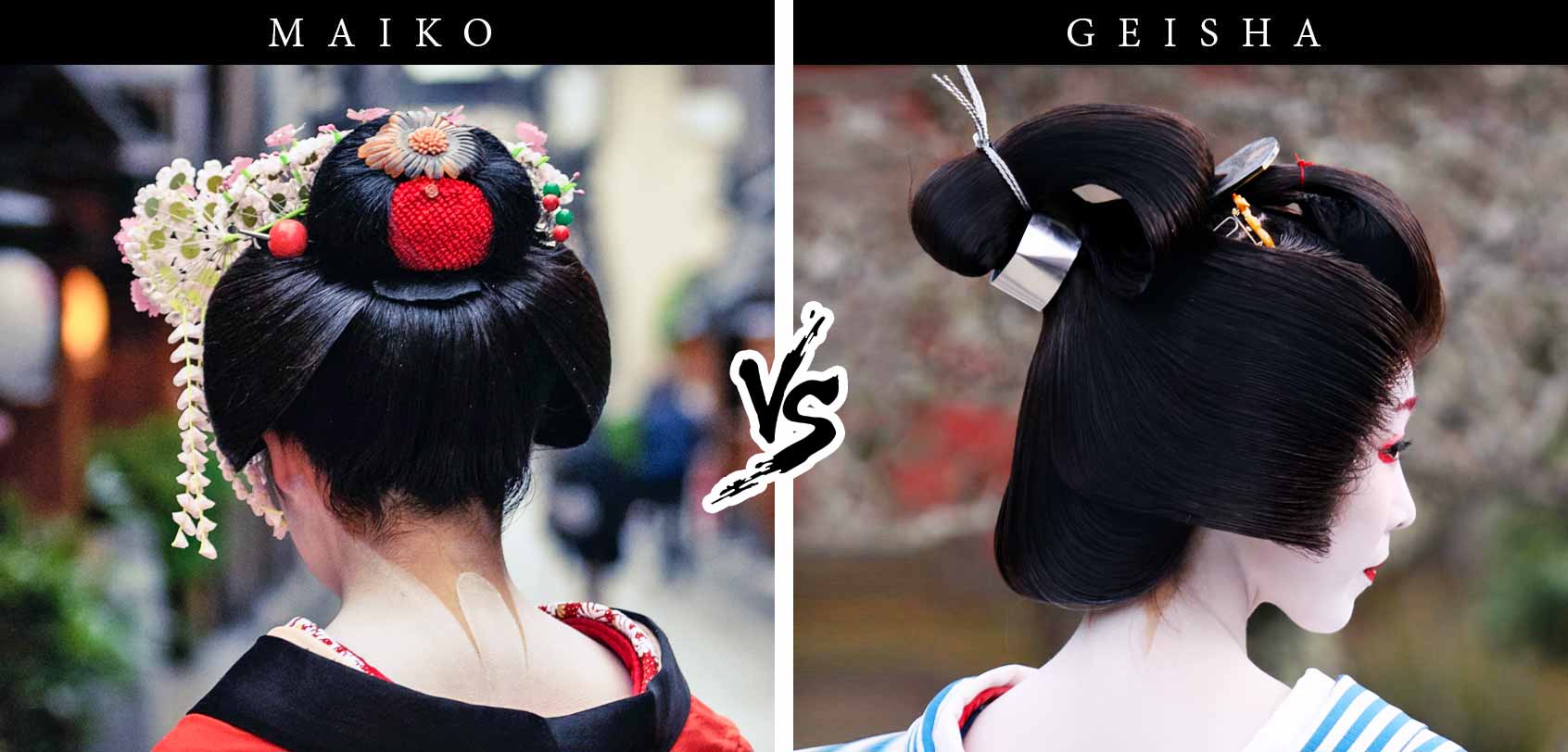
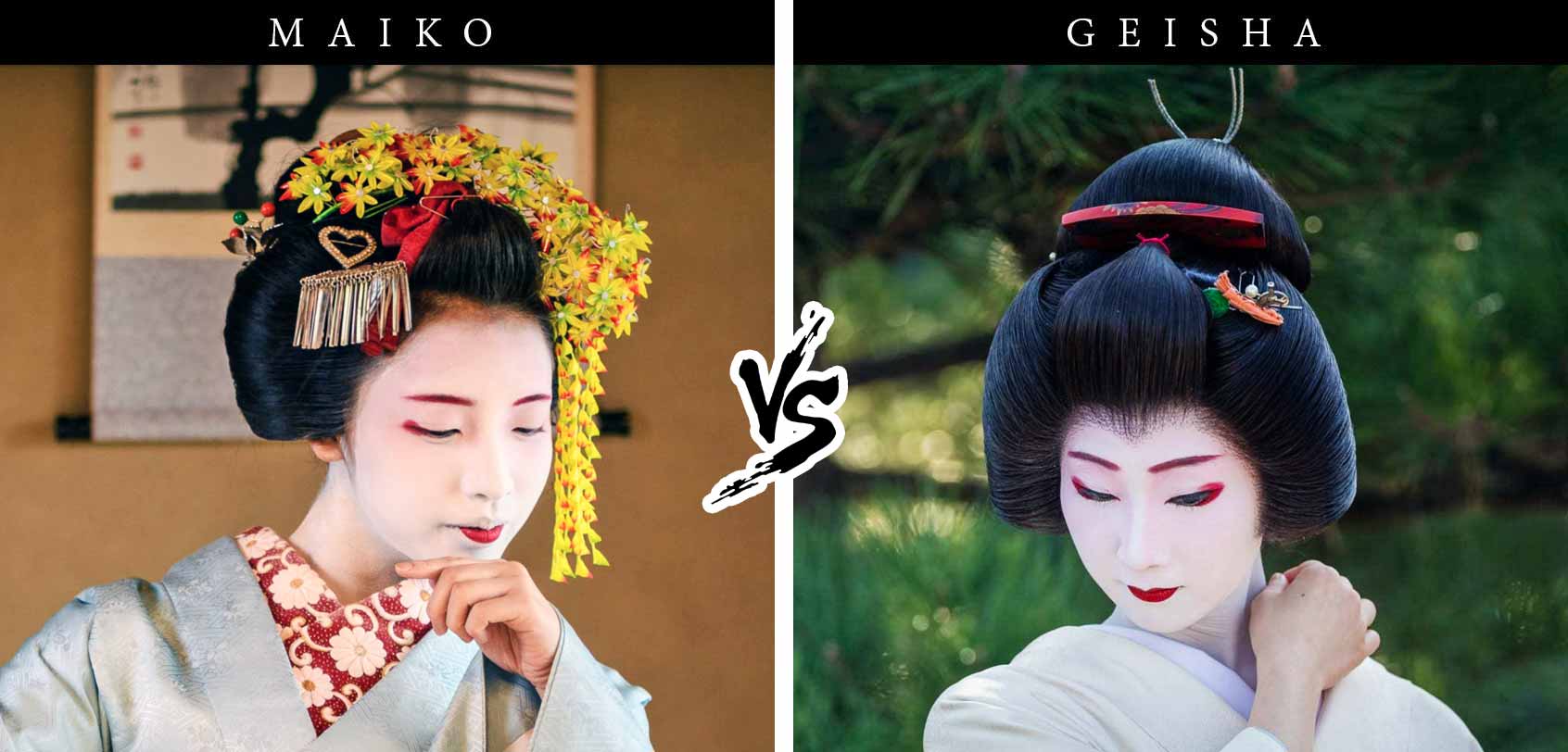
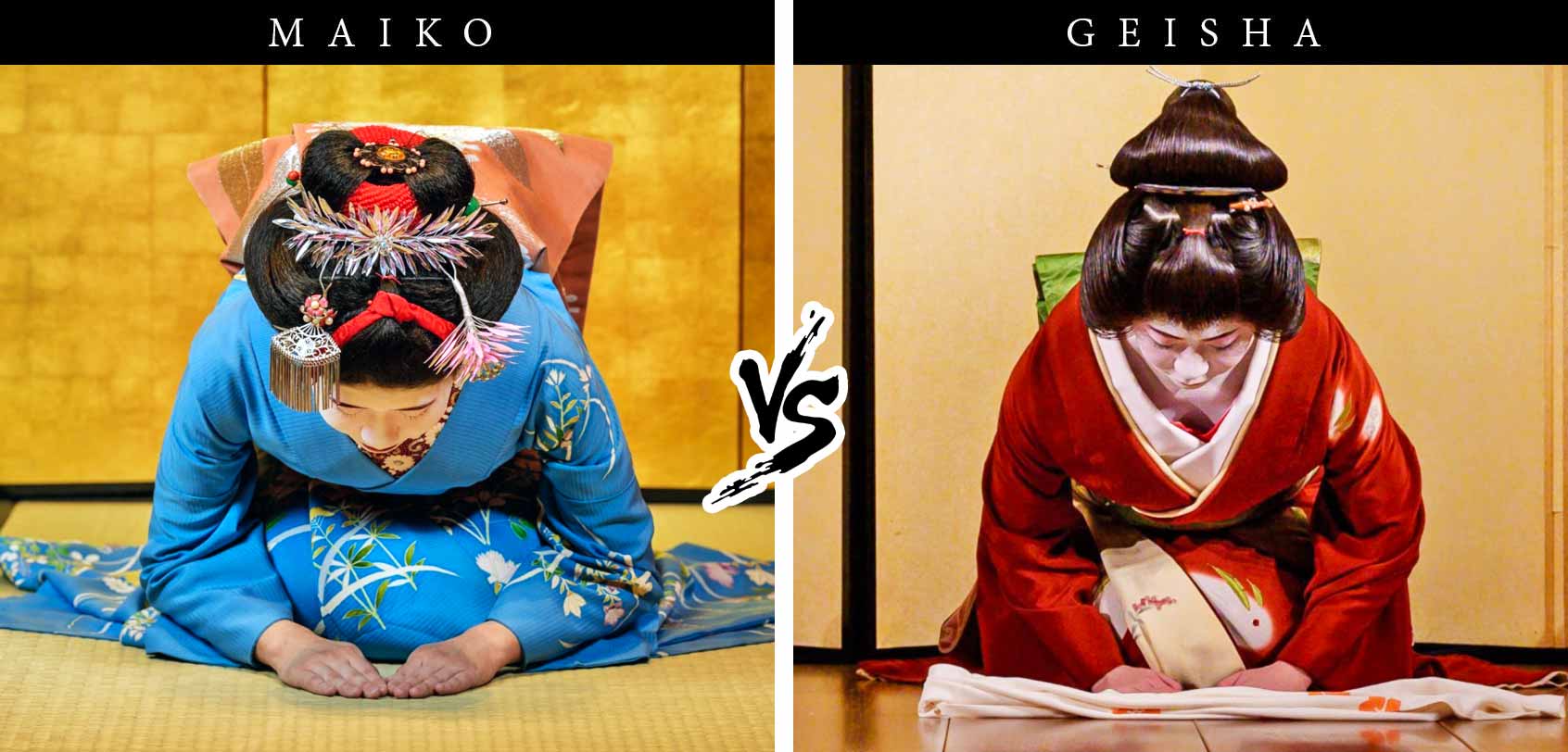
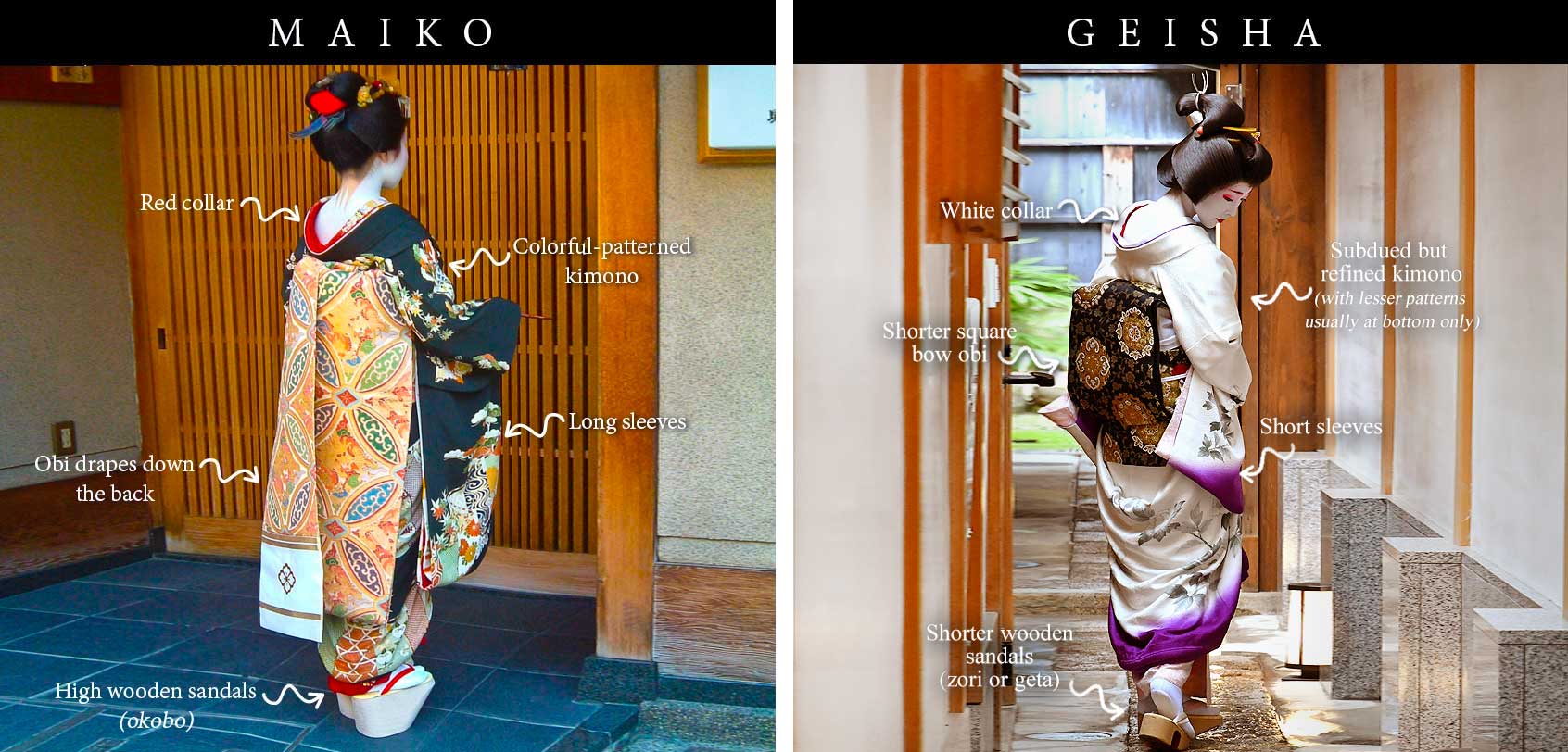
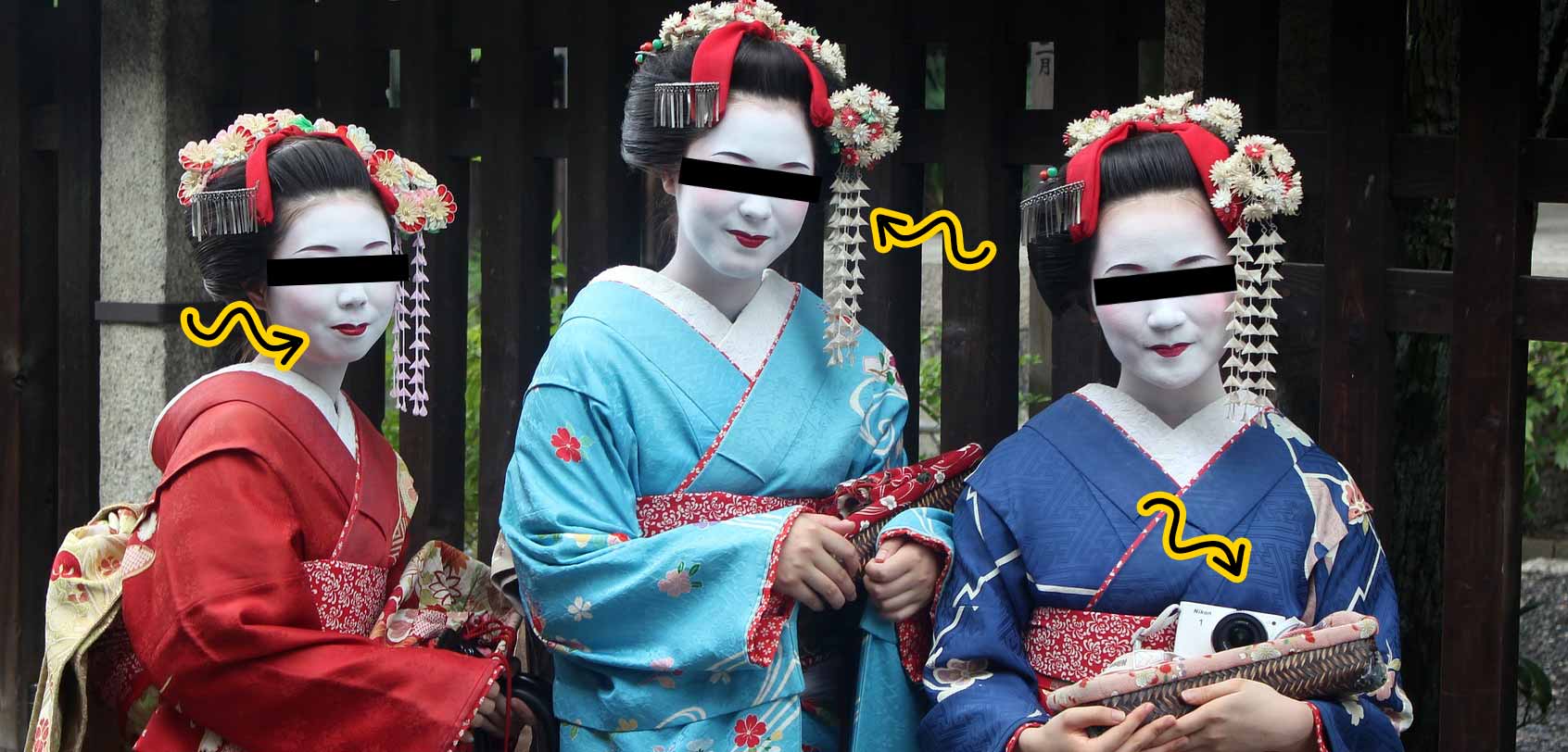
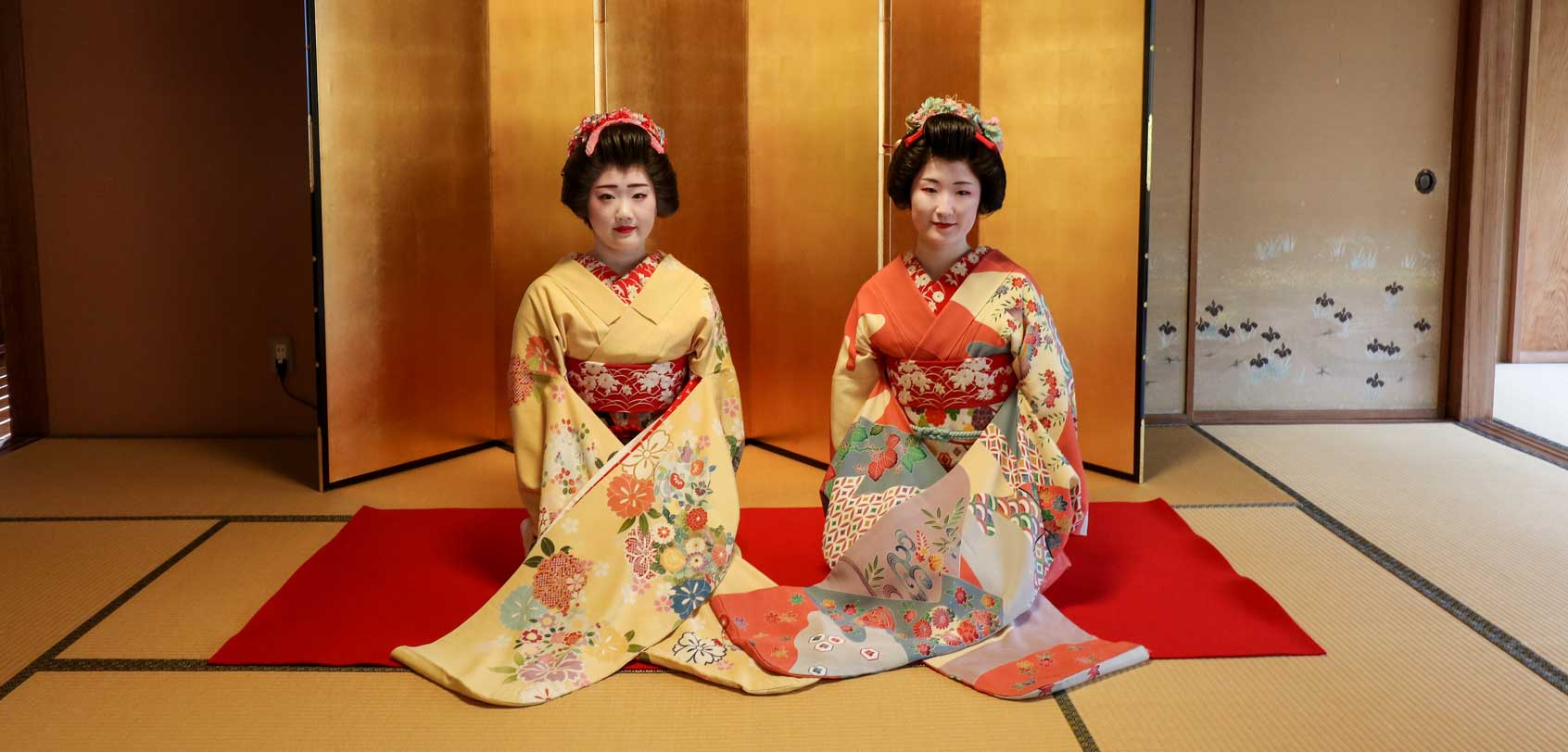
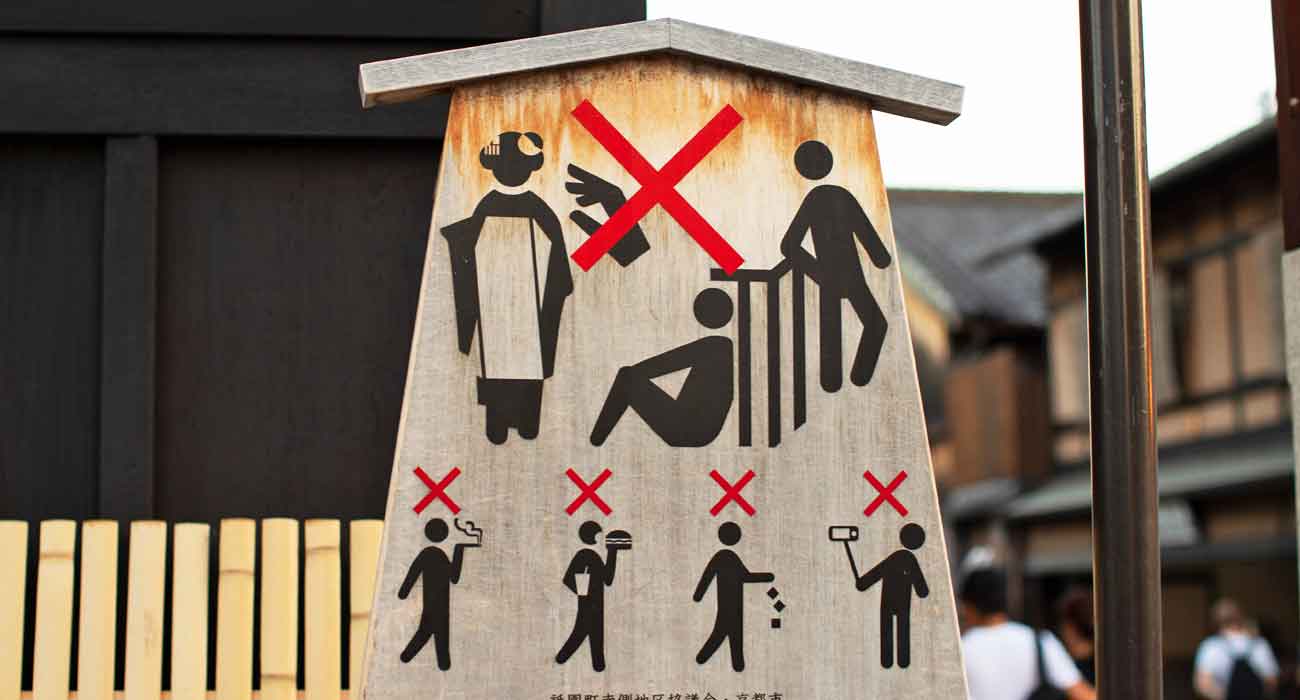


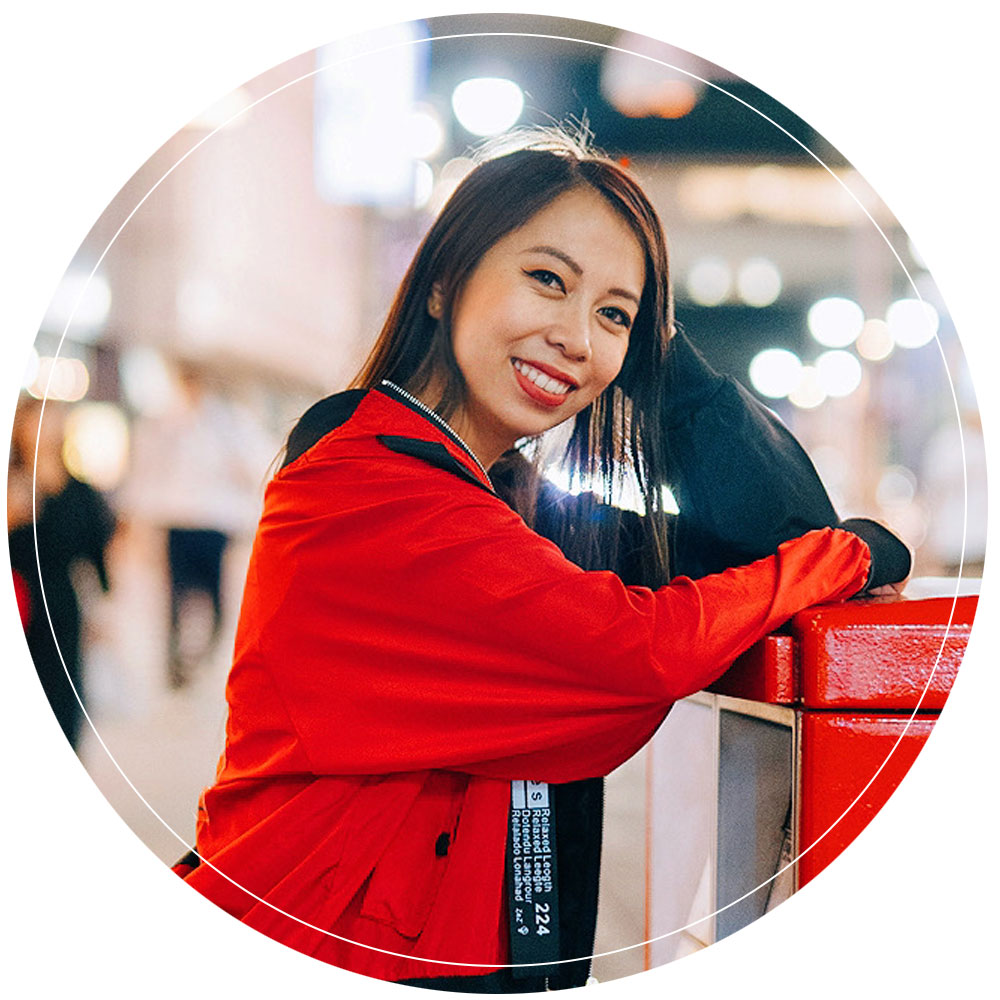
Wow. Such detailed info. I have read “Memoirs of a Geisha” but I felt like this post was much more informative and interesting to read. I was so immersed in it with all the detailed images. I really enjoyed it.
Wow, I was surprised I have a lot to learn from this. from debunking myths, and the transition stage into a geisha.
Geisha was one of my favorite subjects in my artworks. I dreamt of visiting Japan someday, for now, at least I won’t get confused with Maiko from Geisha.
Thanks for sharing this detailed information about geisha :)
I enjoyed the article immensely. Previously, I had little knowledge of Geisha life; but was curious to learn. Your article provided much information; however, my curiosity piqued. My admiration and respect for Japan and its people are prominent. My three years in Japan (Okinawa), schooling at IBM Tokyo, and two extended visits to Tokyo and vicinity are all highlights of my life.
––– James Brooks, San Jose, California, USA